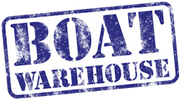-

FSE Robline
FSE Robline LazyJack Polybraid
FSE Robline Lazyjack Polybraid Tailormade for lazyjack systems. This product was specifically designed for use as a lazyjack line. It is slippery enough to allow the sail to glide smoothly into the lazybag. At the same time, it is easy to splice and is...
-

Marine Grade Shockcord - Black (per metre)
Superior quality marine-grade shock cord featuring a polyester yarn outer covering and pure natural latex rubber ribbon interior. This quality shock cord has high stretch capability, UV resistance, is extremely durable, colourfast and won't absorb water...
-
-MAEQ0006-MA-8190_std__75192.1534116128.jpg?c=2)
Marlow
Marlow Excel R8 (100 Meter Reel)
This new rope within the Excel range compliments the existing fusion family of products, using a Dyneema® sk78 core but with an 8 plait cover, blended from Technora® aramid and polyester. CONSTRUCTION: 12 Strand SK78 Colour-Matched...
-
-RWB2311B-RW-6750_std__82758.1526625163.jpg?c=2)
RWB Marine
Shockcord Reels - 100 Metre (Black)
Superior quality New Zealand made marine grade shockcord featuring polyester yarn outer covering & pure natural latex rubber ribbon interior. This quality shockcord has high stretch capability, UV resistance, is extremely durable, colourfast and...
Rope, Cord, Tools & Accessories
Rope, cord, tools, and accessories are essential on a boat for a variety of tasks, including:
- Mooring and anchoring
- Rigging sails
- Securing cargo
- Personal safety
- Repairing damage
The type of rope or cord you need will depend on the specific task. For example, you would use a different type of rope for mooring than you would for rigging sails.
Here are some of the most common types of rope and cord used on boats:
- Nylon rope: This is a strong and durable type of rope that is often used for mooring and anchoring.
- Polyester rope: This is a lightweight and easy-to-handle type of rope that is often used for rigging sails.
- Polypropylene rope: This is a flexible and buoyant type of rope that is often used for personal safety lines and fenders.
- Natural fiber rope: This type of rope is made from materials such as hemp, sisal, or manila. It is strong and durable, but it can be more difficult to handle than synthetic ropes.
In addition to rope and cord, there are a number of tools and accessories that can be helpful on a boat. These include:
- Splicing fids: These tools are used to create and maintain knots in rope.
- Hot knives: These knives are used to cut rope quickly and cleanly.
- Thimbles: These metal or plastic rings are used to protect rope from chafing.
- Rope bags: These bags are used to store rope and keep it organized.
By having the right rope, cord, tools, and accessories on board, you can be prepared for any task that comes your way on the water.
Here are some additional tips for choosing and using rope, cord, tools, and accessories on a boat:
- Choose the right type of rope for the specific task.
- Make sure the rope is in good condition and free of damage.
- Use the right tools for the job.
- Tie knots correctly to ensure the rope is secure.
- Store rope properly to prevent it from becoming damaged.
By following these tips, you can help to ensure that your rope, cord, tools, and accessories are safe and effective on your boat.
